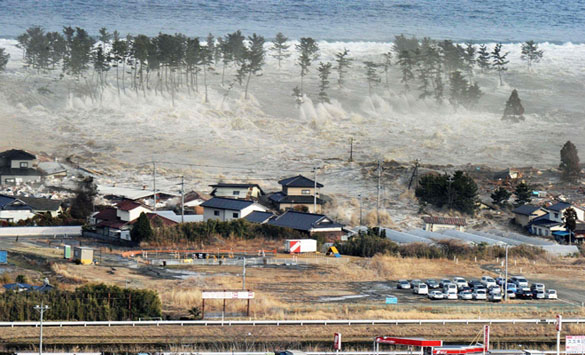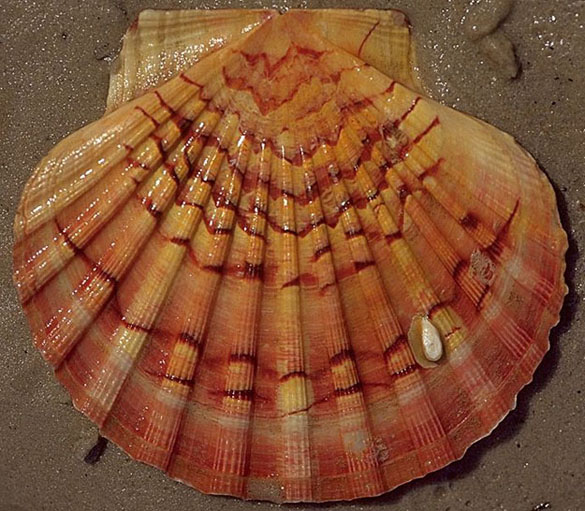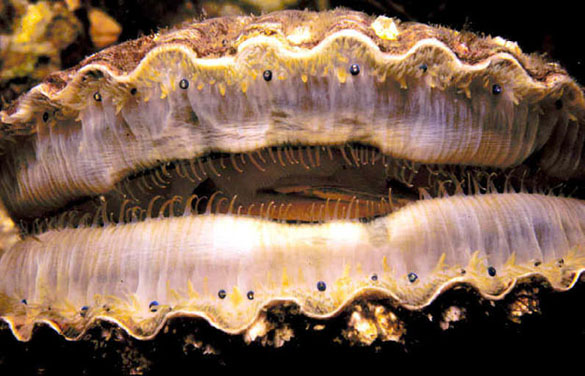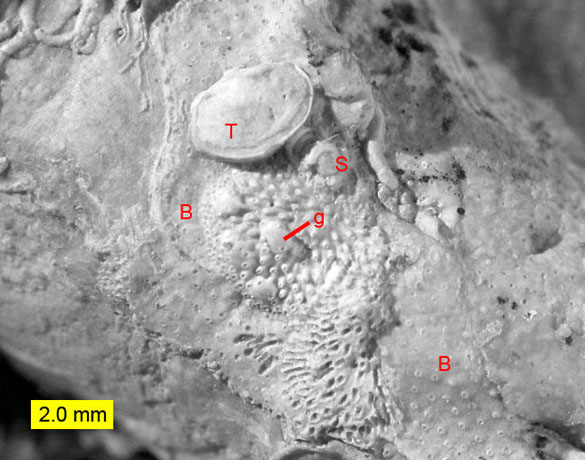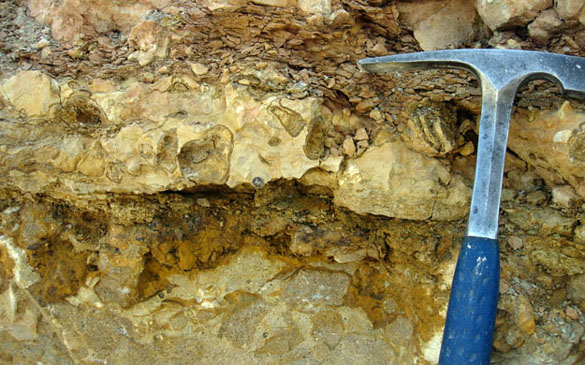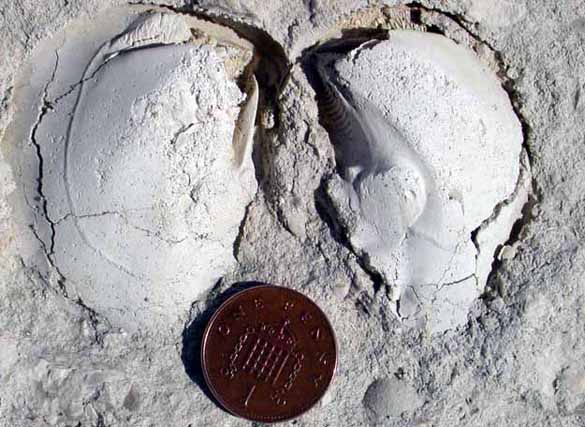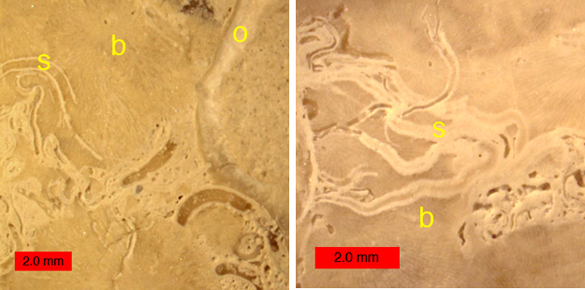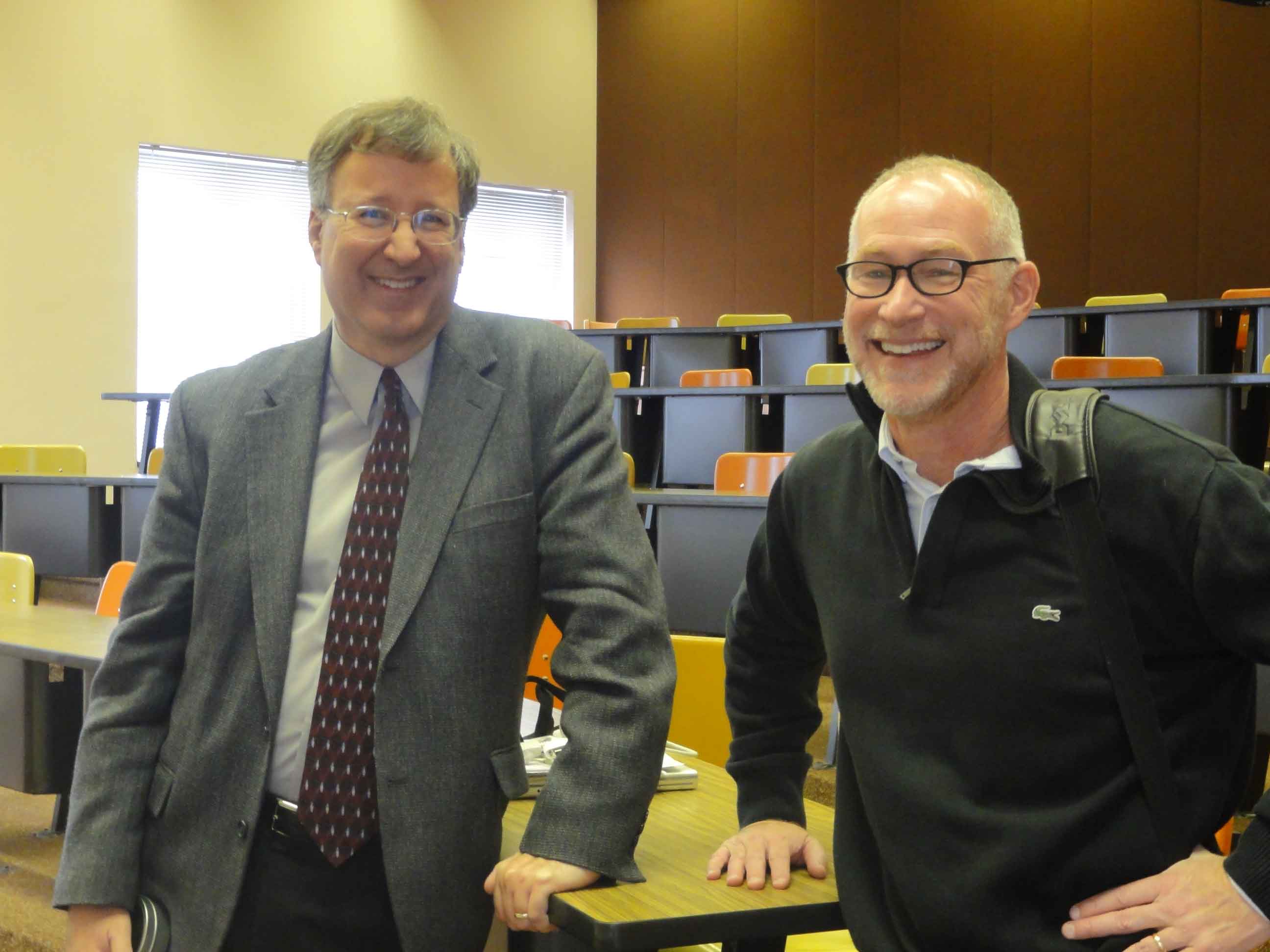
Portrait of Charles Darwin (with an editorial addition).
It is now a tradition among scientists to celebrate the birthday of the great English naturalist Charles Darwin. He was born on February 12, 1809 — the very same day Abraham Lincoln entered the world. (I have images of both men in my office as historical touchstones for the best of science and citizenship.)
Geologists like to remind the world that Darwin was one of their own. He studied geology at Cambridge under the famous Adam Sedgwick and helped him map rock units in Wales one summer. One of the primary influences on Darwin’s evolutionary ideas was the work of the uber-geologist Charles Lyell. In fact, in an 1838 notebook, Darwin wrote:
“Pleasure of imagination. . . . I a geologist have illdefined notion of land covered with ocean, former animals, slow force cracking surface &c truly poetical.” [Maybe not so grammatical, but any geologist recognizes the sentiments!]
Charles Darwin, Geologist by Sandra Herbert is an excellent book on this topic (Cornell University Press, 2005, ISBN: 978-0-8014-4348-0). I mention more of Darwin’s geological work and ideas in a recent podcast produced by The Wilderness Center. (The interview starts about 24 minutes into the program.)
The College of Wooster has a rich history of grappling with the tensions between its Presbyterian foundation and the new Darwinian evolution. In the late 19th Century when evolution was mentioned in Wooster publications, it was always negative. In The Post-Graduate and Wooster Quarterly of October 1890, for example, Professors Jonas O. Notestein and Elias Compton wrote in a review: “The whole essay is well calculated to wake up evolutionists to see either that there are more things in heaven and earth than are dreamed of in their philosophy, or else that it had been better if they had never been born.” (I walk by a large portrait of stern Professor Compton every time I enter our second floor Scovel Hall lecture room … to teach evolution!)
In 1894, the astronomer Samuel Phelps Leland gave a talk at Wooster in which he said, “Your great, great, great, great, great grandfather was never a pollywog, and your great, great, great, great grandfather was never a ring tailed monkey. No relative of yours was ever anything but a man; there is no connecting link between the mortal and the immortal.” The Wooster Voice campus newspaper writers at the time thought it was a fine speech. I find some pleasure in another famously wrong quote from Dr. Leland three years later: “… it will be possible to see cities on Mars, to detect navies in his harbors, and the smoke of great manufacturing cities and towns… Is Mars inhabited? There can be little doubt of it … conditions are all favorable for life, and life, too, of a high order. It is not improbable that there are beings there with a civilization as high, if not higher, than our own. Is it possible to know this of a certainty? Certainly.” (From World Making, p. 68-69; Woman’s Temperance Publishing Association, Chicago, 1898.)
Just a year after Samuel Phelps Leland dismissed Darwin at Wooster, a young biology professor named Horace N. Mateer began to teach a course on campus titled “Organic Descent”. In his Wooster Catalogue description, Dr. Mateer wrote that “the doctrine of development by descent has come to be regarded as the basic factor in the study of organic life”. With careful language and judicious politics, he broke through the resistance and taught evolution openly at Wooster for the first time. He was very cautious indeed: he did not write the word “evolution” itself into any course description (it did not appear in a Wooster Catalogue until 1963!), and he repeatedly gave a popular talk on campus called “Evolution and Christianity” in which he essentially avoided Darwinian natural selection in favor of a kind of progressive creationism that correlated with biological and geological evidence. Nevertheless, Professor Mateer laid the foundations for secular evolutionary science at Wooster.
(The story of evolution at Wooster is told in more detail in an article I wrote for the Fall 2002 issue of Wooster magazine.)



